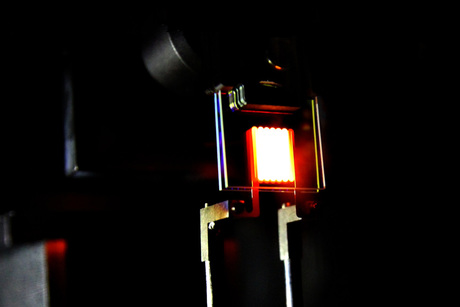Incandescent bulbs could make an energy-efficient comeback

US researchers have developed a way to combine the warm look of traditional light bulbs with 21st-century energy efficiency. Published in the journal Nature Nanotechnology, their study features a new type of filter that ‘recycles’ the infrared photons in incandescent bulbs.
“The way incandescent lights work is that you heat a filament to a certain temperature and it emits a broad band of light,” explained Assistant Professor Peter Burmel, from Purdue University’s School of Electrical and Computer Engineering. “But only about one in 20 photons or so is actually visible to the human eye; the other 19 photons are essentially just wasted as heat.”
Burmel and fellow Purdue researchers recently joined with Massachusetts Institute of Technology (MIT) to develop a way to recycle these wasted photons. Their method features a conventional heated metal filament surrounded by secondary structures made of alternating layers of Earth-abundant elements such as silicon dioxide and tantalum dioxide, each with thicknesses less than 1/100th that of a human hair.
The secondary structures enable the passage of visible photons but not infrared photons; instead, these are reflected back to the incandescent source. They are then reabsorbed by the incandescent filament, causing its temperature to rise. The method is said to improve incandescent lighting efficiency by 10 times.
“You can send those infrared photons back to the emitting source as many times as you need until they get reabsorbed,” Assistant Professor Bermel said. “Each photon has a certain amount of energy associated with it, so you can reclaim that energy as heat. The net effect when you do that many times is that you can maintain a higher temperature and brightness using much less electric power than would ordinarily be required.”
Commercially available fluorescent lighting has an efficiency range from 7–15% and LED lighting products range from 5–15%, while more advanced LED lamps under development may range as high as 29%. The efficiency of the new lighting method already approaches that of some fluorescent and LED bulbs, achieving around 6.6% efficiency (a threefold improvement over the efficiency of current incandescents), and could one day reach 40%.
The filter also could have applications in a new type of solar technology called thermophotovoltaics, which could improve the efficiency of solar cells. Assistant Professor Bermel explained, “In thermophotovoltaics you have a radiating heat source, not unlike an incandescent filament, and then you shine that light on a photovoltaic cell to generate electricity. The filter can be used to select only photons with energy levels corresponding to the semiconductor band gap of the material in the solar cell for maximally efficient conversion.”
Assistant Professor Bermel acknowledged that further research is needed to measure the long-term performance and production costs of the new devices. “Fortunately,” he said, “the basic materials used in our experiment are both abundant and non-toxic.”
Fluoride boosts water-processed perovskite solar cells
Queensland University of Technology has developed a water processing method to fabricate more...
Multibuild solar installation delivered at City of Playford
Trinasolar partnered with Venergy Solar to deliver a multibuild solar installation across the...
Oracle assists major distributor in clean energy transition
Essential Energy, an electricity distributor in Australia, is said to have modernised its...










